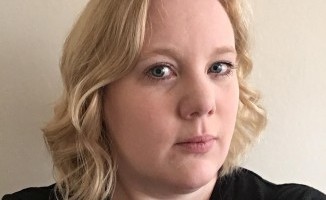Clare Meakin, science engagement manager for National Museums Scotland, on why the organisation is on tour teaching science and technology to pupils
Here at National Museums Scotland we recently heard from a physics teacher in Bishopbriggs.
He had a six year pupil who had come to him and asked for his help with a personal statement which he needed to complete for his application to study engineering at university.
The pupil asked the teacher to remind him what the renewable energy trip was that they had been on three years earlier, when he was in third year, as he wanted to reference it as inspiring him to pursue a career in engineering.

The trip the pupil remembered was part of the Get Energised programme, an education programme National Museums Scotland has run over the last few years supported by the ScottishPower Foundation, which focuses on Scotland's future energy needs.It was really gratifying to hear that it had stuck with him and made a real difference to his life.
The challenges facing STEM (science, technology, engineering and mathematics) learning in Scotland have been widely reported recently: whether it be low pupil take-up of STEM subjects or teacher shortages. In the last fortnight the Scottish Government has launched a consultation on its STEM strategy acknowledging that there are opportunities for improvement.
It wants to raise the level of STEM skills and knowledge through education and training, to take action to reduce funding gaps in relation to deprivation and gender, to inspire young people, and finally to match STEM education and training to the needs of the labour market.
Our work at National Museums Scotland has always been outwardly focused and we are already playing a key role in supporting STEM learning with our world-class collections of inspiring scientific artefacts, teaching and facilities.
But I believe there is always potential for doing things better and our aim now is to increase the impact of what we do and open up our resources to even more people across the country.
Engaging and inspiring young people is fundamental to continuing the significant role Scotland plays in STEM industries across the world. For young people to understand how they can shape our future, they need to have the opportunity to develop their skills, and make, build, test, and experiment.
Last year National Museums Scotland launched its five-year national strategy called Across Scotland which included an even stronger emphasis on the affect we can have beyond our walls - both in the physical sense but also the cultural, social, educational and economic sense
That means working with more museums across Scotland, more schools, more further educational establishments, and more partners with the aim of ensuring the value of our collections, expertise and programmes is felt as widely as possible. Additionally working with museums and collections across the country brings additional benefits and enables them to build capacity.
Powering Up, our outreach programme supported by the ScottishPower Foundation, is a great example of how we can take what we already do well and deliver it right into communities, connecting with a diversity of backgrounds so that we can really challenge negative preconceptions, such as the notion that you have to be a graduate to do something. By taking our learning out to a whole new set of schools and communities across Scotland, some in hard-to-reach areas, we are really breaking down walls.
I love witnessing the reactions of people to some of our collections and our science engagement programmes. One of the artefacts we have on display in our new science and technology galleries at the National Museum of Scotland is a mouse kidney grown entirely from stem cells from a mouse embryo at Edinburgh University just two years ago. As you can imagine, it is only a tiny thing, but seeing visitors’ responses to the incredible science which underlies it is amazing.
We recently hosted a family day with a team from Sheffield Hallam University on the use of virtual reality in prosthetics, highlighting the university’s recent astonishing work in the field and showcasing some of our own prosthetics collection.
Just watching and listening to how young people take to this technology, how they get involved and ask pertinent questions, is great.
The job of enthusing people to all the possibilities science can offer is immensely rewarding and with the tremendous resource we have in our new science and technology galleries, and the exciting programme of science engagement work we are currently developing, I am increasingly excited by what we can achieve in this field.






